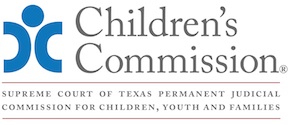H. Best Interest
1. Presumption
The prompt and permanent placement of the child in a safe environment is presumed to be in the child’s best interest. Tex. Fam. Code § 263.307(a).
2. Factors
The following factors should be considered by the court and DFPS in determining whether the child’s parents are willing and able to provide the child with a safe environment:
• The child’s age and physical and mental vulnerabilities;
• The frequency and nature of out-of-home placements;
• The magnitude, frequency, and circumstances of the harm to the child;
• Whether the child has been the victim of repeated harm after the initial report and intervention by DFPS;
• Whether the child is fearful of living in or returning to the child’s home;
• The results of psychiatric, psychological, or developmental evaluations of the child, the child’s parents, other family members, or others who have access to the child’s home;
• Whether there is a history of abusive or assaultive conduct by the child’s family or others who have access to the child’s home;
• Whether there is a history of substance abuse by the child’s family or others who have access to the child’s home;
• Whether the perpetrator of the harm to the child is identified;
• The willingness and ability of the child’s family to seek out, accept, and complete counseling services and to cooperate with and facilitate an appropriate agency’s close supervision;
• The willingness and ability of the child’s family to effect positive environmental and personal changes within a reasonable period of time;
• Whether the child’s family demonstrates adequate parenting skills, including, providing the child and other children under the family’s care with:
◦ minimally adequate health and nutritional care;
◦ care, nurturance, and appropriate discipline consistent with the child’s physical and psychological development;
◦ guidance and supervision consistent with the child’s safety;
◦ a safe physical home environment;
◦ protection from repeated exposure to violence even though the violence may not be directed at the child; and
◦ an understanding of the child’s needs and capabilities; and
• Whether an adequate social support system consisting of an extended family and friends is available to the child. Tex. Fam. Code § 263.307(b).
3. Child Age 16 or Older
The following guidelines should be considered by the court when determining whether to adopt the permanency plan submitted by DFPS for a child 16 and older:
• The permanency plan submitted to the court includes the services planned for the child to make the transition from foster care to independent living; and
• This transition is in the best interest of the child. Tex. Fam. Code § 263.307(c).
